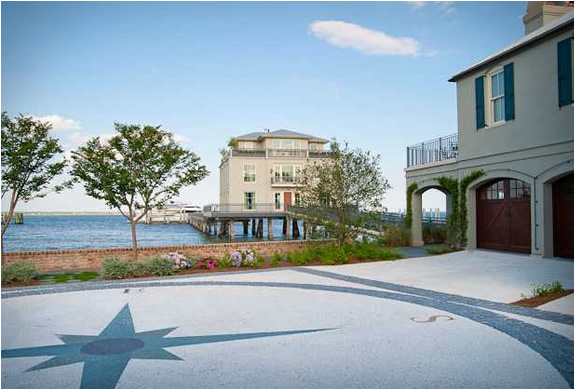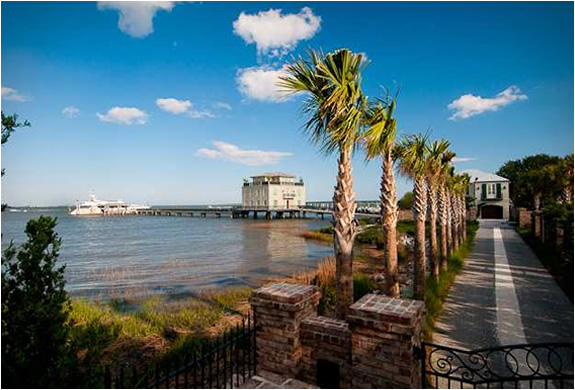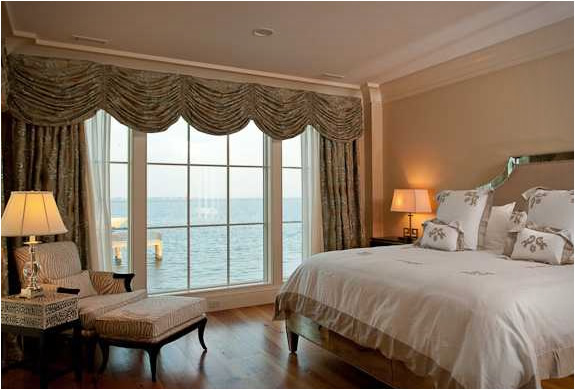A great new app to locate home services. Check it out here.
Emmanuel Fonte | Music | Art | Leadership
If music be the food of love, play on. Emmanuel Fonte website is about music, art, real estate, architecture, design and decor. Occasionally, I talk about my other passion, hockey.
A great new app to locate home services. Check it out here.

German-based company, Baumraum builds treehouses using sustainable materials and specially engineered cables that avoid damaging the trees. Some lucky kid or adult is living the treehouse dream.





 If you’ve been on the fence about homeownership, now may be the time to take the step. Don’t let the negative press deter you from one of life’s greatest joys.
If you’ve been on the fence about homeownership, now may be the time to take the step. Don’t let the negative press deter you from one of life’s greatest joys.
Let’s take a look at five short and sweet reasons that homeownership could be a good fit for you and your family.
1. Equity. When you pay rent, you never see that money again. It is lining the landlord’s pocket. Yes, buying a home may come with some hefty initial costs (downpayment, closing costs, inspections), but you will make that money back over time in equity built in the home. Historically, homes appreciate by about 4 to 6 percent a year. Some areas are still experiencing normal appreciation rates. For the areas that have seen harder times since the recession, experts feel that the housing market will recover. Homeownership is about building long-term wealth. A home bought for $10,000 in 1960 is most likely worth 10 times that in today’s market.
2. Relationships: Renters tend to see their neighbors come and go. Some people sign one year leases, while others are in the community for much shorter terms. Apartment complexes also tend to have less common shared space for people to meet, greet, and socialize. Homeowners, however, have yards, walking trails, or community pools and clubhouses where they can get to know each other. Neighbors stay put much longer (at least three to five years if they hope to recoup their closing costs). This means more time to develop relationships. Research has shown that people with healthy relationships have more happiness and less stress.
3. Predictability: Well, as long as you have a fixed-rate term on your mortgage it’s predictable. Most people buying homes today know that a fixed-rate is the way to go. This means your payment amount is fixed for the life of the term. If your mortgage payment is $500 today, then it will still be $500 a month in 10 years. This allows for people to budget and make solid financial plans. The sub-prime crisis meant some homeowners with adjustable rate mortgages saw their monthly payments rise and then rise some more. Homeownership, though, generally comes with a predictable table of expenditures. Even the big purchases are predictable. You know most roofs last just 15 years (or so). You know that each year you’ll need to pay for the gutters to be cleaned, and so on.
4. Ownership: Okay, this is a given. Homeownership means you "own" your home. That comes with some incredible perks, though! You can renovate, update, paint, and decorate to your heart’s desire. You can plant trees, install a pool, expand the patio, or do holiday decorating that would rival the Kranks. The bottom line is this is your home and you can personalize it to your taste. Most renters are stuck with the same beige walls and beige carpet that has been standard apartment decor for 20 years. Now is your chance to let your home speak!
5. Great Deals: It’s a great time to buy. Interest rates are at historic lows. We’re talking 4.0 percent instead of 6.0 or higher. This means big savings for today’s buyers. Home prices have also taken a dip since the recession, which means homes are more affordable than ever. If you have steady income and cash for a downpayment, then let’s talk about what homes in your area could be a fit for you.
Homeownership can be a real joy. Let me know how I can help: 206-713-3244 or email me.
With buyers looking for homes that will be usable for years as their family needs evolve, design pros are stepping up to meet the challenge with a variety of flexible solutions.
When Creighton and Tracey Gibson built a ranch 15 years ago, Creighton’s job as owner of a franchise that offers nonmedical care and companionship to seniors made him sensitive to his own aging family members’ needs. Accordingly, the couple added some features to their North Carolina home to accommodate them when they moved in.
First, an extra bedroom with kitchenette and a bathroom with grab rails were put in when Creighton’s father moved in after a fall in 1998. After he died and Tracey’s mom, an amputee, couldn’t manage alone, the couple built a ramp at their front door for her wheelchair. The Gibsons have found the arrangement offers benefits to each generation, including for their 11-year-old daughter, who gained a live-in babysitter when she was young and now can offer companionship as she gets older.
Housing aging parents for health, safety, or to avoid loneliness as they’re living longer isn’t the only reason that home owners are altering floor plans:
▪ A rising immigrant population whose cultural traditions often encourage everyone to live under one roof is making the multiple-generation household more common.
▪ The difficult economy is spurring college graduates to do what was once unthinkable — move home and reclaim childhood bedrooms until they land a job or save enough money to be on their own. Ditto for young divorced adults, sometimes with a child in tow.
▪ The tough resale market is convincing empty-nesters to stay put and remodel homes to maximize unused space, including spare kids’ bedrooms.
Because of the differences in needs, ages, traditions, budgets, and property types, there’s not a single layout that works for a large cross-section of consumers, says Brian Brunhofer, president of Meritus Homes, a home builder in Deerfield, Ill. As a real estate professional, your job is to help buyers and sellers assess housing options for now and later with three major objectives in mind:
Any home — newly built or remodeled — should consider this concept as much as possible since it strives to make a home safe and useable for a variety of ages, abilities, gender, budgets, and physical challenges, says John Salmen, member of the American Institute of Architects and founder of Universal Designers & Consultants in Takoma Park, Md. Among its prime tenets:
▪ Easy circulation: Navigating space freely is key, whether people move among different levels or spaces on the same level, Salmen says. Doors and openings should be at least 32” wide for wheelchairs and walkers to get through. Elevators can eliminate stair climbing for those physically challenged or even for home owners needing to carry heavy groceries up stairs. Adding a two-stop model in an existing house might cost between $20,000 and $25,000, but leaving a 4’ by 5’ shaft, so equipment can be installed later if needed, would cost less than $5,000 initially, says Richard Bubnowski, design principal of his eponymous firm in Point Pleasant, N.J.
▪ Good illumination: Aging eyes need three to five times more light than people do at 18 years of age, says Salmen.
▪ Non-slippery floors and low-piled rugs: These help people of all ages avoid falls.
▪ Easy room and appliance access: Instead of knobs, levers facilitate opening doors for young and arthritic hands. Touch faucets allow easier access to water, particularly when hands are sticky or fingers also are arthritic.
▪ Movable storage: Placed under kitchen countertops, these can be rolled away to allow home owners to sit in a traditional chair or wheelchair.
▪ Zero-step entrances: Whether crossing a main door or walking into a shower, these make traversing spaces carefree.
▪ Discreet grab bars: These eliminate an institutional look and can mimic wainscoting or any trim, says Lake Bluff, Ill.-based builder Orren Pickell.
Before adding space, home owners should make better use of what they have, says designer Marianne Cusato, author of Get Your House Right (Sterling Publishing, 2008). “Perhaps there’s stuff that can be put away with affordable storage purchased at places like IKEA, or a rarely used dining room that can become an office,” she says. Other ideas include:
▪ Transforming basements and attics: When houses include these levels, typically unfinished, converting them can cost less than adding on to a first floor, says Pickell. The main expenses may be a nicer stairway; stronger floor or subfloor; better insulation, ventilation, and windows; plumbing for a bathroom; and an outside egress to meet building codes.
▪ Converting dens, family rooms, and garages: These main floor spaces can be remodeled into a bedroom for full- or part-time use for someone not able to climb stairs, and a nearby powder room can be remodeled to accommodate a shower if there’s space, says Elizabeth M. Sorensen with Dale Sorensen Real Estate in Vero Beach, Fla. When a door to the outside can be built, the suite becomes more desirable and private, says Brunhofer. Adding this type of suite can cost less than a year at a nursing home, says Michigan designer Leslie Hart-Davidson. “Home owners should think in terms of long-term savings,” she says.
▪ Rethinking empty bedrooms: For home owners whose children aren’t returning, Hart-Davidson transforms bedrooms into gyms, hobby rooms, offices, and walk-in storage.
▪ Melding indoors and outdoors: Homes become more usable and enjoyable by opening them to the outdoors through large windows and walls that provide a visual and physical connection, says Irvine, Calif.-based architect Robert Hidey. The outdoor areas themselves become more room-like and functional when designed with distinct areas to cook, sit, and dine, preferably with a “roof” and “walls” to screen hot sun, rain, and bugs, he says.
Constructing a new home from the get-go to meet a range of life stages helps avoid expensive alterations. Among the most usable designs:
▪ Hip ranches: Popular after World War II as new suburbs sprouted, they’re attracting attention again since they offer a cost-effective plan and main-level master suite. Brunhofer estimates the layout may run 10 to 15 percent less than a comparable two-story home. His firm sometimes adds a second master bedroom for future family needs.
▪ Loft-style plans: Whatever the house style, Bubnowski advocates one open sweep inside for living, eating, and cooking. So does Colleen Reardon, manager and sales associate at K. Hovnanian Homes in Orlando, Fla., which conducts extensive research and has seen interest also in open ceilings and bigger living spaces.
▪ The “New Economy Home”: Cusato’s efficiently scaled 1,771 square-foot, two-story “New Economy Home” was planned with the latest demographic trends in mind. The house is compact, so it costs less to build and is easier to maintain than most other homes, and features one master suite upstairs and a second one downstairs off the kitchen with an adjacent bathroom and back door to a porch and the outdoors.
▪ Bonus rooms: Once built above a garage for myriad uses, the bonus room is back, as it’s able to change functions as family needs demand. Today it’s a playroom; tomorrow it’s a home office or gym.
▪ Ancillary cottages: When land, budget, and codes permit, some home owners build a separate structure away from the main house, says Cusato. These detached bungalows or casitas are a way to gain a separate living or work space for family or a hideaway for guests who stay a while, says Hidey.
Number 2 Concord St in Charleston is a truly unique and truly inspiring property. The property is located adjacent to the Carolina yacht club and was converted to a residence through a monumental construction effort. The end result is a trophy property overlooking Charleston harbor with unparalleled views. The 2.72 acre property includes the main residence and the guest house. The property is a stunning display of luxury and craftsmanship, with absolutely no expense spared. The list of noteworthy features is endless, several highlights include: a covered boat lift, library, wine room with climate control, fully integrated audio visual system, and a programmable window shade system that, with just the touch of a button, captures panoramic 360 degree views of Charleston harbor.




See just how innovative advertising has become. McDonald’s sundial billboard is the perfect example of such creativity and ingenuity. Displayed is their breakfast menu as well as their lunch menu. The sun casts a shadow on each item that corresponds to the time of day you would normally eat it.
Ad agency Leo Burnett, with the help of an engineer, researched the perfect location so that the sundial can create the cool effect. Talk about impressive! With an aim at transforming the way people think, feel and ultimately behave, Leo Barnett hit their mark spot on with this ad.


Fun huh?!
Upgrading your kitchen needn’t cost a fortune. See how painted cabinets, stylish task lighting, vintage fixtures, and clever storage ideas can create made-to-order looks for less
Read more here at thisoldhouse.com
Copyright © 2016-2024All Rights Reserved
Powered by Wordpress Web Design on the Genesis Framework